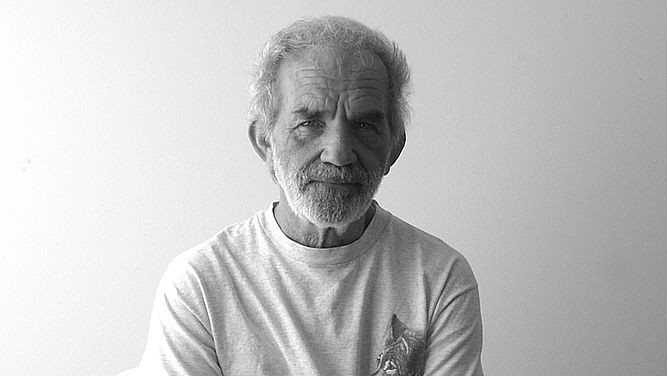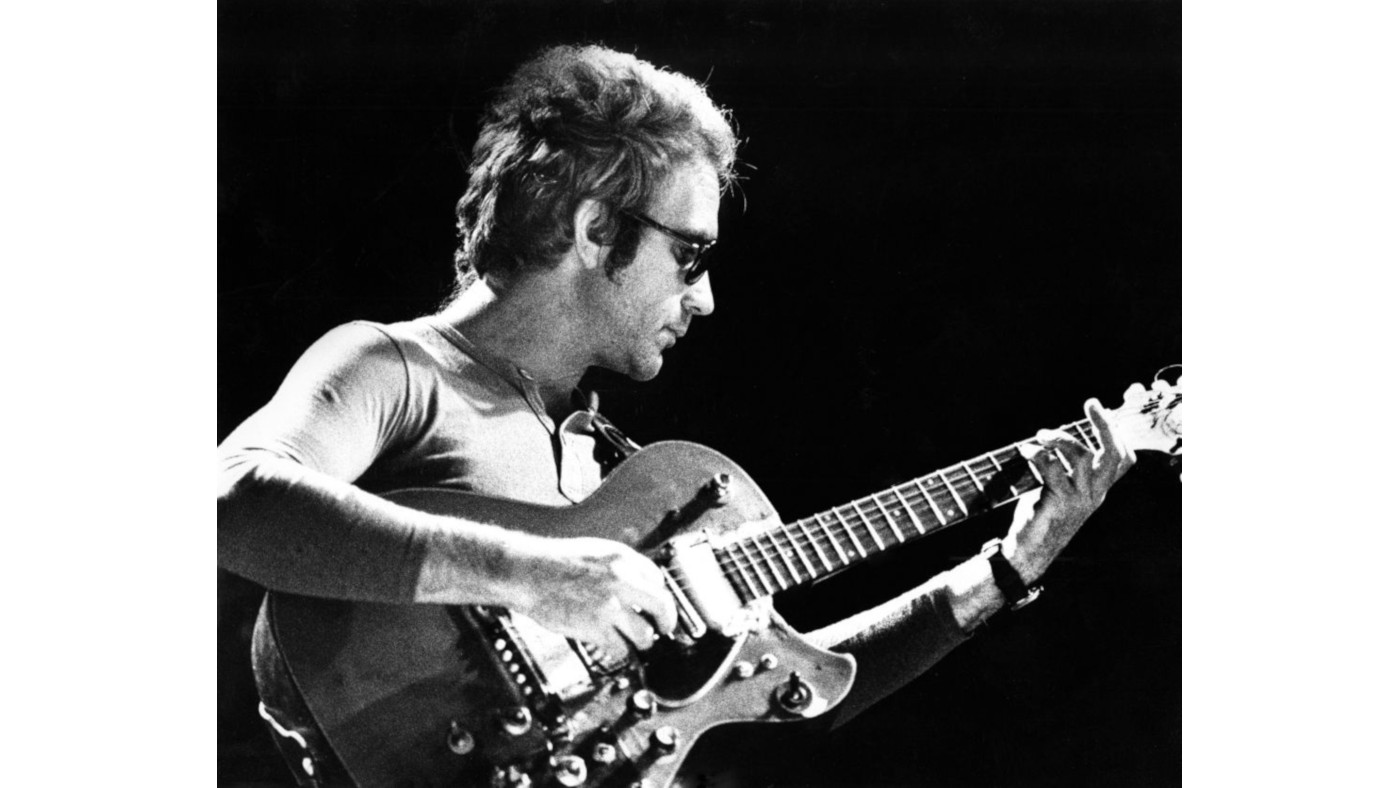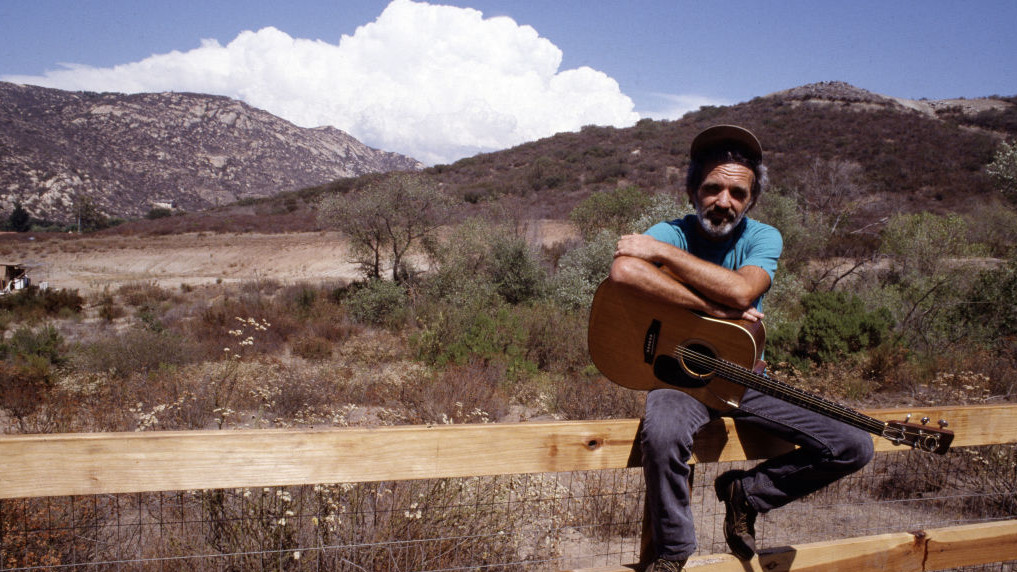On JJ Cale: “He would buy a $100 guitar, then if he messed it up by drilling holes, it was okay. That was the cost of educating himself”
Cale's widow and bandmate Christine Lakeland reflects on his career and gear

On the eve of JJ Cale’s first posthumous album, his widow and former bandmate, Christine Lakeland, gave us a tour of his guitar collection. This is the truth behind the legend’s one-off models, his refusal to release a signature guitar - and the gig that meant he never trusted a tech again...
Close your eyes and he could still be with us. That inimitable creaky door of a voice. That unforgettable bob-and-weave guitar work. For JJ Cale’s widow and former bandmate, Christine Lakeland, it was an emotional wrench to embark on Stay Around, the new posthumous album whose 15 songs were foraged from the demos left behind by the late legend upon his 2013 death. “But when I found the title track,” she recalls, “it floored me. I thought this music should be heard, y’know?”
You know how some people collect automobiles? Well, John’s thing was guitars
For Cale fans, this material is an unexpected pleasure: a few last shards of genius to hold close. Thankfully, for Lakeland, there are other mementos to keep her late husband’s memory alive. Sprawled across the couple’s South California home - and in storage nearby - lies Cale’s 50-strong guitar collection, and it’s one of the most eye-opening A-list hauls around: mostly dirt-cheap, heavily modified and as unique as the man himself. “You know how some people collect automobiles?” Lakeland muses. “Well, John’s thing was guitars. He had a lot of them...”
How did it feel to put together Stay Around?
“I had a period after John’s death that I called ‘the foggy years’. Then I realised that I didn’t want the world to forget him, and I was finding new music while sorting through things. John had a simple home-recording setup that he could move from room to room. He worked in hot swappable hard drives and always made demos. I already knew about some of the songs, but I didn’t want to include songs we might have played on a gig, where there was a grainy YouTube video already out there. I wanted it to be, ‘Oh my gosh, I’ve never heard that song before.’ That became a priority. There might be a two-minute piece he cut at the kitchen table. Or with Chasing You, that’s a recording from a band rehearsal in the living room. The experience became more of an upper than a downer, y’know?”

Guitar man
You still have all John’s guitars. How many does he have?
“I’m going to ballpark his collection at 50. He would read guitar magazines to find what was the new thing coming out. He’d find a guitar he was interested in and buy it online. He’d pick up guitars on the road. He’d take care of them, shine them up. He was always modifying them. He did move around from one guitar to another; he had a lot of instruments he enjoyed fooling with.
Get the MusicRadar Newsletter
Want all the hottest music and gear news, reviews, deals, features and more, direct to your inbox? Sign up here.
“He preferred light strings and a low action, and he played with a very light touch, but he was experimental, all over the map on anything that would alter the sound. Then he’d laugh and say, ‘It doesn’t matter what I play, I can’t get away from sounding like something else I already wrote.’ It’s the way someone touches the guitar. The unique thing about John was his rhythm and phrasing. I don’t hear that anywhere else.”
What made a good guitar for John?
He was always talking about scale length, and that’s why he has an assortment of both Gibsons and Fenders
“To him, it was all about how the neck felt. That came down to him having smaller hands, and he always said, ‘It’s hard to play some guitars if the neck is too wide.’ He liked the smoothness of the rounder C-profile. However, he played all manner of necks, including a wider-necked Ramirez classical and an Ovation. He was always talking about scale length, and that’s why he has an assortment of both Gibsons and Fenders. He’d often swap necks out - I still have four necks leaning up in a corner at home. But once he’d got a guitar to where he could play it without thinking, he was loyal. He was often comfortable with one guitar for the full 90 minutes on a gig. There’s enough other things that come into your focus and provoke anxiety when you play live. So it’s nice to have some things be second nature.”
What are the key guitars in his collection?
“Well, he had his $50 Harmony acoustic [H-162] with five pickups. There are old photos of him playing that with just one or two pickups, back in around ’68 to ’70. But then he started adding pickups - ‘jimmy- rigging’, he called it - out of necessity. At that time, as a broke musician, John couldn’t afford to buy an electric guitar, so the Harmony became a thing he’d fiddle with. Unfortunately, because there were so many holes cut in it and it didn’t have a back, that Harmony became unplayable. It was falling apart, so he had his friend [LA builder] Danny Ferrington put it back together, strengthen the sides. But the guitar doesn’t look the same - and John stopped playing it. He’d moved on, and it was never the number one guitar again.”
What pickups did he favour?
“All kinds. He installed the Gibson 490T, 490R and Classic ’57. He liked the Seymour Duncan JB, Jazz Neck, Pro HB and Seth Lover. He used Mike Christian pickups a few times, Fishman transducers often and Lace Sensor single coils a couple of times. It was trial and error. One of the pickups on that Harmony was low-impedance, where you could plug into the ’board and didn’t get that hum. That way, he could record with it and engineer for himself - he couldn’t always afford engineers.”
No signature
Was John a skilled repairman?
“He would buy a $100 guitar, then if he messed it up by drilling holes, it was okay. That was the cost of educating himself. He wouldn’t take some expensive guitar and destroy it. He’d experiment with a Chinese knock-off - no disrespect intended - before he tried it on a guitar that mattered to him.”
He never made a signature model, did he?
You could probably find one of those Casio guitars today for $150 - nobody wants them any more. But he liked the way it felt
“No. In his later years, the reason John never did endorsements was because he said, when you’re a broke and unknown musician, no-one will give you a guitar. But once you are known, they want to see their guitar being played by you. John would say, ‘Well, I can afford to buy a guitar now.’”
What was his most personal instrument?
“In 1991, he had a personal one-off Martin 000-45 Deluxe Custom acoustic made to his own spec. He loved that, played it all the time at home. It has an Engelmann spruce top, mahogany neck, ebony fingerboard and bridge, Brazilian rosewood back and sides, peghead veneer, white binding, lots of abalone trim and inlays. John replaced the original saddle pickup with an LR Baggs. Rather than a big dreadnought where your arm’s up in the air, this is more of a small, comfortable sit-in-a-chair guitar. It’s on the cover of Guitar Man [1996].”
His Casio PG-380 MIDI guitar was a leftfield choice...
“Yeah, that one was made in Japan circa 1991 - it’s got a bolt-on maple neck, a rosewood fingerboard and he added a humbucker and a Floyd Rose. He liked the fact he could trigger so many different sounds from the MIDI hook-up, which was quite new then. You could probably find one of those today for $150 - nobody wants them any more. But he liked the way it felt and it was a versatile tool: he could fingerpick, then play a powerful electric song on it. It was all about keeping things simple. He never had a roadie. There was never someone walking out on stage handing him a different guitar every song.”
Anything you wouldn’t expect him to play?
“In the mid-80s, when his friend Steve Ripley designed his Kramer Ripley, he gave John one of those. We did one tour, I remember, where he played that Kramer through a Marshall stack, so for those few weeks, everything had that powerful sound - which was very different for a Cale gig. He did like to change it up.”

Best of both
How about his later taste for Danelectros?
“John would always experiment with cheaper guitars. From around 2002, he played Danelectro Convertibles - they were, like, $350. He liked them because the neck was thin, they didn’t weigh a lot and didn’t seem as affected by climate changes on the road. He’d modify them - I have two or three where he put pickups under the saddles and maybe in the soundhole.”
Did he prefer Gibson or Fender?
He’d always make sure that any guitar had both the electric and acoustic properties
“He had several Gibsons: an L-4, a Les Paul, the ES-175, ES-335, ES-330, ES-336, CS-356, J-165 EC. But he wasn’t as big a fan of the Gibson necks as Fenders. For a few years in the early 80s, he played a late-70s Strat and I have another highly modified Stratocaster where he started with the body and neck, then added pickups and made it to his liking. It’s such a personal thing, almost like a model airplane: it’s got two humbuckers either side of a Seymour Duncan single coil, a Canadian neck replacement and an Alembic Strat-O-Blaster added. He played that guitar sitting in with Eric Clapton at a San Diego show in 2007.”
It seems like he wanted the best of all worlds, sonically?
“Yeah, he’d always make sure that any guitar had both the electric and acoustic properties. I remember, what started John tinkering and mixing pickups was when he purchased a mid-80s Carvin AE-185 that he played on the Live video at Carnegie Hall. It’s a semi-hollowbody with two humbuckers and a piezo in an acoustic-style bridge. He thought that was the coolest thing - whether it was one stereo cord out, or maybe he’d just have another output and another cord and plug into the amp, and then switch back and forth, or blend the two pickups. And then he started doing that kind of modification to all his guitars.”
Did he prefer taking responsibility for his own guitars?
“Yeah. I remember, when John started playing the Casio, it was one of the only times we had roadies, and he let one of the guys change his strings before he went on stage. The band always waited just offstage, because John would do a number first, then we’d come on. So John went out to start playing, y’know: ‘Good evening.’ And evidently, the string change wasn’t done entirely right. He got into the first verse and a couple of strings flew off, because they weren’t locked into the string holders. It was obviously someone who didn’t know what they doing. I remember the panic. I walked out as fast as I could, John took off his guitar and I handed him my Gibson ES-347, and the show went on. And he fired the guy!”
Did he have any guitars gifted to him by famous friends?
“In the later years, Mike Campbell gave him a Duesenberg, the Alliance Mike Campbell I. And when Gibson did the reissue of Clapton’s Les Paul, he gave John one of the first ones: I think it’s serial #5 or something. That one actually never went on the road - never even left the house - but I’m gonna say that’s probably one of his most valuable instruments.”
New homes
What guitar from his collection did he tend to grab for songwriting?
“That would definitely be one of his acoustics. He had several Gibsons. I have a J-45 and he purchased a similar reissue of that. He had an L-5 he liked. And then there’s the Heritage L-00 Standard, the smaller, dark chocolate sunburst model. He played that a lot around the house. If you’re playing on stage and you want people to hear you, maybe you want the big, booming rhythm. But John was more about the smaller-bodied, intimate kind of acoustics. He did more fingerpicking.”
Did he fall out of love with any guitars?
“I have a Byrdland from 1991 that he found on the road. He worked on it, installed a Bigsby tailpiece, Mike Christian bridge with a pickup, and Fishman Prefix Pro Blend Preamp electronics on the side. He added a Sta-Tuned string lock on the front of the headstock and cut an access opening in the back. But he played it some then said, ‘I can’t keep it in tune.’ So that got set aside. If there was anything frustrating about a guitar, then it wasn’t played all the time.”
So, do you know what’s going to happen to all these guitars?
“Sometimes I think I might auction some off for charity. I’d love to see these guitars find new homes. Because I have what I want; I don’t need all of these guitars. It’s almost embarrassing. John was always wanting to give things to other people. He always felt he’d got luckier than most of the guys he knew. He always used to joke, ‘I don’t have to get a day-gig selling shoes.’ He knew that not everybody has good luck in music. It’s a fickle business.”
JJ Cale’s posthumous album, Stay Around, is available now on Because Music.
“Beyond its beauty, the cocobolo contributes to the guitar’s overall projection and sustain”: Cort’s stunning new Gold Series acoustic is a love letter to an exotic tone wood
“Your full-scale companion. Anytime. Anywhere… the perfect companion to your full-size Martin”: Meet the Junior Series, the new small-bodied, travel-friendly acoustic range from Martin











